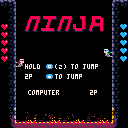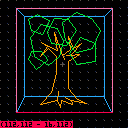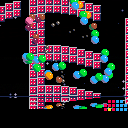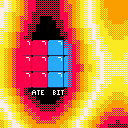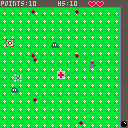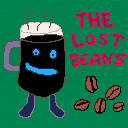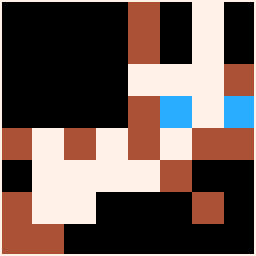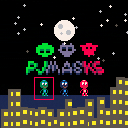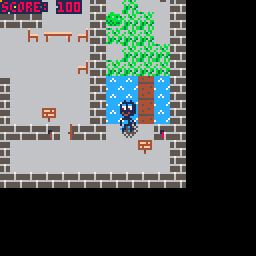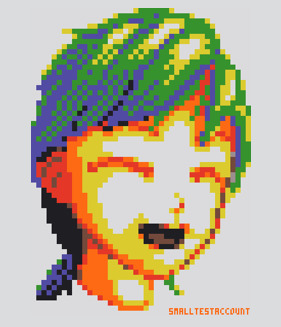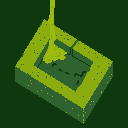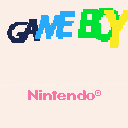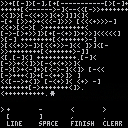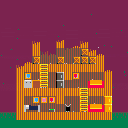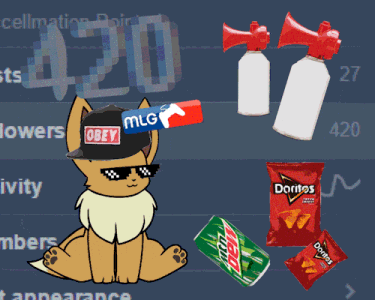Ninjas climbing the wall, try to defeat the enemy down.
Hold Z to jump higher, that you can throw the enemy by stomping on his head.
You can get shuriken by eat the random icon in the screen, press Z to use it when you in air.
You can choose computer AI or player 2, anyone else or just your another hand.
CONTROLS
1P:
Jump : Z (O)
2P:
Jump: Arrow Up
The game is still in developing, more weapons will be add in next update. If you have any suggestions please level a comment. I will improve it in next version, thank you!



In composing scenes made of polygons and shapes, I needed a way to lay out a scene and then retrieve the coordinates of the individual shapes. Now you can retrieve the shapes themselves!
Controls:
mouse: move cursor
click: place line point
up/down: cycle colors/sprites
left/right: cycle through drawn shapes/cursor
X (p1 X): cancel shape/delete selected shape
SEDF (p2 directionals): adjust cursor/shape/point position
Q (p2 X): toggle hud/cursor
tab (p2 O): toggle fg
Z (p1 O): hold for secondary functions:
+drawing line: lock to 90-degree angles
+drawing rect: lock to square
+up/down: cycle shape types
+left/right: cycle through selected shape's points
+tab (p2 O): copy selected shape/cursor coordinates to clipboard
+Q (p2 X): copy all shapes to clipboard
The foreground elements I was using, as they were relevant only to my concurrent project, I commented out. You can add your own foreground draw commands in the labeled segment of the _DRAW() function.
When copying your shapes to the clipboard, the data will be formatted for pico's built-in draw functions. To change the name of the draw functions exported, modify the strings in the PREFIXES table at the top of the _INIT() function. To change the separator between each shape when copying all shapes change the SHAPELISTBREAK string.
Todo:
- add more complex shapes: polygons, complex sprites, ovals
- include fill states
- add layer adjustment
(this previous version is 0.1)
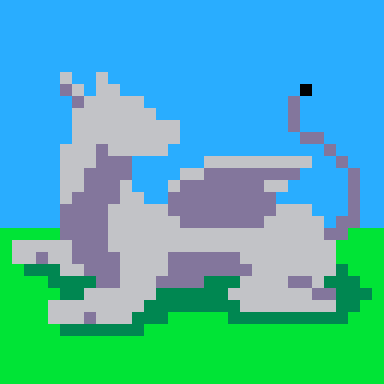

This is the first game I made in Pico8, and I kind of learned the system as I was making it.
OLD:
Day 3:
-There was a bug that took an hour to fix :/
Day 4:
-I made a silly error that took an hour to fix
-We're almost at a playable beta build n_n
Day 5:
-The beta build is live!
-2 new types of enemies
-Bug fixes
-Placeholder sfx
Day 6:
-Tweaks
-HP Packs
-3 more power ups on the way
Day 7:
-There are 5 power ups in all, and a random power up! (with sfx)
-Placeholder music
-Tweaks
-Bug fixes (kinda)
-Invincibility is now visible
-Bombs are fully implemented, press x to clear the screen of enemies!
Day 8:
-Player can now choose between icy and retro controls on the pause menu
-Controls displayed on game load up
-Bug fixes
-Changed some strange colors
--(I figured out how to use black, so I'll most likely be making a couple color changes)
Day 9:
-Final release!
-Bug fixes
-Hidden boss
-Sidestepping making aiming easier
-Touching up



I was working on this a while ago and haven’t found much time for it lately, but I thought it could be interesting to some people. It is a fork of Lua that implements the PICO-8 dialect.
Why?
If you know how to embed Lua somewhere, then there are chances that you can embed PICO-8 compatible Lua instead! I use it for an unfinished toy emulator project.
Features
- short if syntax (on one line)
- short print syntax (? at the beginning of a line)
- compound assignment operators: += /= etc.
- C style not equal operator: !=
- C++ style comments with //
- fixed-point arithmetic with overflows, infinity etc.
- the PICO-8 math library (shr, atan2, flr etc.)
- binary literals: 0b1001001.10010
- works in Windows and Linux, and probably in OS X too
How?
The usual approach to the language extensions is through code parsing and patching. For instance, replacing all occurrences of <something>+=<blah> with <something>=<something>+(<blah>). This is what PICO-8 itself does, which is why it still has the occasional weird parsing issues (you can write x=0y=1 but not x+=0y=1). My approach is to implement these extensions in the Lua parser instead, which is elegant, more robust, and gives better error reporting.
Where?
It’s on GitHub: https://github.com/samhocevar/z8lua
Example
Here is a z8lua session in my terminal; you can see familiar PICO-8 syntax in here:
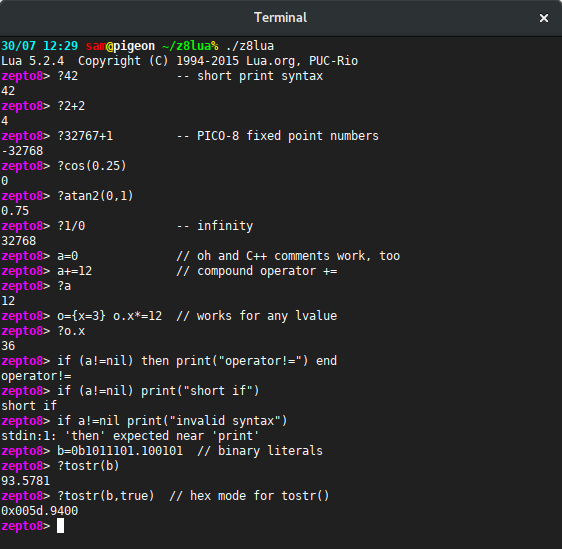



A disaster has struck! The coffee beans have been lost!
Help Rich - this coffee dimension's maintainer - find the lost beans! Embark on a caffeinated platform adventure where you can find coffee upgrades that will help you with your adventure. For example, if you become an americano you gain the ability to double-jump! Obviously!
How quick can you find the beans? Can you also find the special bean™?
If you're looking for a more serious challenge, try finishing the game without getting any of the upgrades!
Best played with coffee in hand.
Cursors to move, X or M or V to jump! (assuming PICO-8 default controls)
The game utilises the Advanced micro platformer toolkit by @matthughson
Made for Coffee Jam 18
edit: added a title screen and some minor tweaks



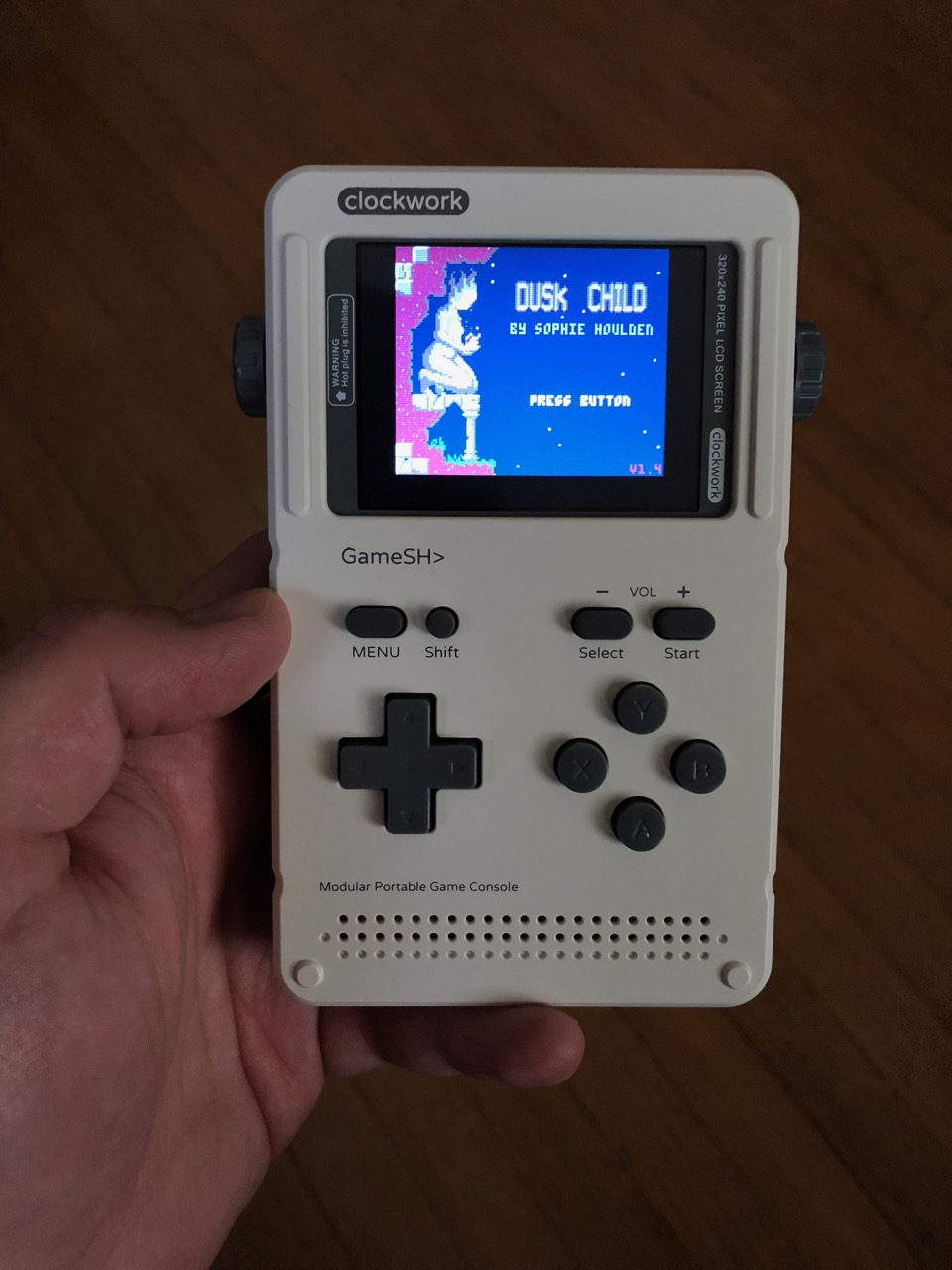
This is Pico-8 running on the Clockwork Pi GameShell, a new hackable handheld game machine. GameShell has an ARM architecture, runs Linux, and works with the Raspberry Pi version of Pico-8.
Featuring a "modular" design, GameShell comes as a easy-to-assemble kit. You need side cutters or a hobby knife to separate the plastic pieces from their sprues and clean up the ends. Beyond that, the parts go together without tools. There are five modules: the main board, the screen, the battery, the keypad, and the speakers. Each module is enclosed in a plastic case with an easy-to-open lid. The modules are connected with little cables, and they all fit snugly in a Gameboy-sized case. There's a headphone jack and a microUSB port for charging, as well as on-board Wifi. The keypad includes D-pad, ABXY buttons, select, start, menu, and shift. You can also get a separate expansion module for shoulder buttons on the back.


[i]For years, the development of PICO-8 cartridges has been restricted to those elite few who have knowledge of the arcane "Lua" programming language. Well, ladies and gentlemen, I am pleased to inform you that this is no longer the case! This PICO-8 cartridge contains within it an Integrated Development Environment for a language that anyone can learn. When the language first appeared as P'' in 1964, it lacked the necessary i/o routines to become popular; but thanks to some recent extensions to the language (as well as a little re-branding) it has become instantly recognisable to programmers all over the world. The language has just eight simple commands that anyone can learn in a matter of minutes -- soon, you too could be writing software for the PICO-8!









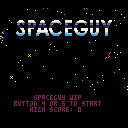
 0 comments
0 comments
